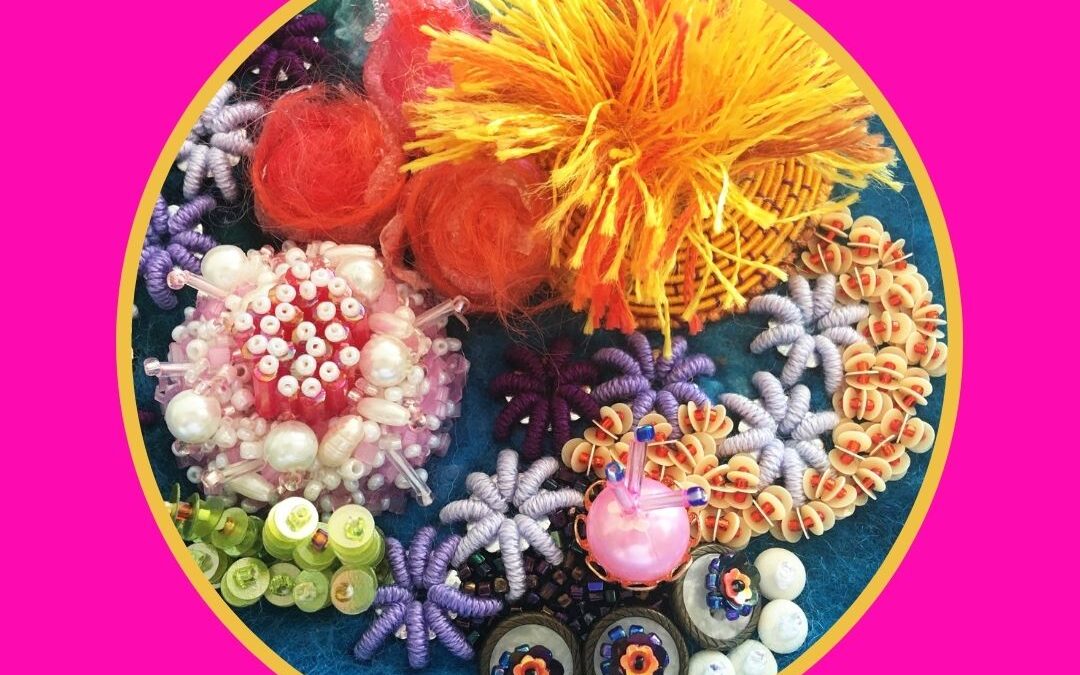In my library, I believe there are at least three books alluding to being able to show how to design to stitch – not one of them has actually been helpful to me, but perhaps that’s just me!
However, while stitching yesterday, I realized I’ve found that even with hand embroidery, I have a way of designing that suits me, my drawing abilities, and most especially my embroidery abilities too.
Because I think those three things are what’s needed to be able to actually design to stitch.
Let me explain.
At the end of the day, we can read lots of books, attend loads of workshops or classes – but if we can’t work out a set of systems or devices that actually help us to work our way using our own style, then I think it’s game over.
Somewhere along the line, we have to make a connection with how we design best – in other words, we have to learn to ‘see’ – and by that I mean to understand ourselves as creative beings.
Do we design best based on research or spontaneity? Should our designs be computer-generated or drawn out on paper? Do we prefer collage, drawing, or painting to express our ideas? Abstractly or realistically? What time do we work best – mornings or afternoons? Are we driven by routine or just work when it feels right?
Then we have to understand our own unique style – the colours we love and tend to use over and over, the marks we seem to gravitate to and use continually. Do we work with a single technique or mix our media? Do we like to work big or small, in a theme or series or one artwork at a time?
How do you look for your unique style? Simple. Just lay a group of your recent works down together – step back, take a photo – or leave them there for a few days if possible. Look for the commonalities that link each of those works – they’re there – we just have to look for them. Analyze the lines and shapes, the colours and patterns you use – sometimes it’s not easy to see as we’re too close, but doing this helped me enormously.
So already, there’s a lot we have to understand about ourselves and the way we work best before we even get to how we can interpret those lines and marks we make – and that’s about looking into yourself and comprehending what you see there.
Then, at some point, we have to think about our abilities – and our weaknesses – and I believe this has to come into the design process too. For instance, for the life of me, I cannot execute satin stitch. It always looks messy and uneven – so I avoid it. In other words, I design to my strengths – not my weaknesses.
And I think that’s a huge point – basically, everything we do should be linked to our strengths – the things we know we do well, whether we’re relaxed or under duress with a deadline to meet.
Why work in someone else’s style? Why work with materials we’re not comfortable with? Why work big when small is preferred? Or, use colours that simply don’t gel.
Design is really about having the confidence to have a go, make mistakes, learn, improve, and take a few knocks here and there while celebrating the successes along the way too.
So I’ve learned long ago, to put the design to stitch books away and do it my own way.
And that works for me – I hope it works for you too.
Design to stitch your way!


